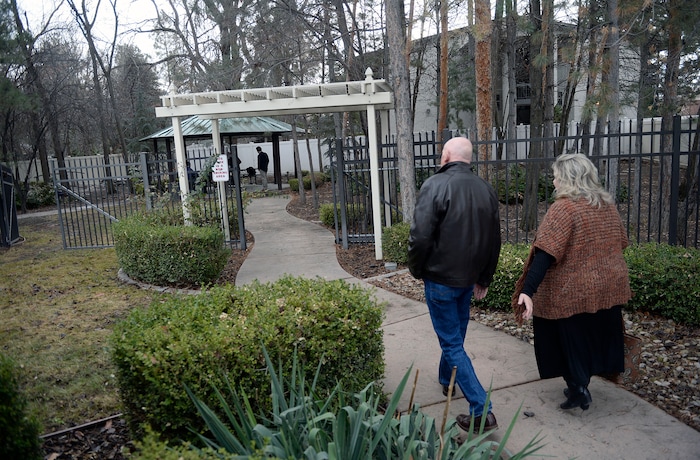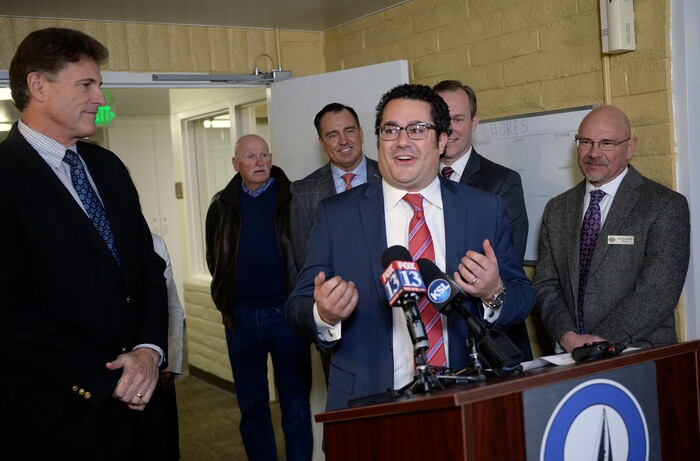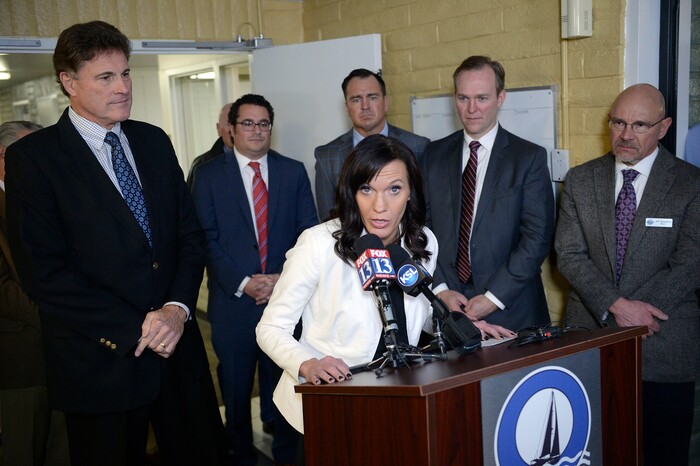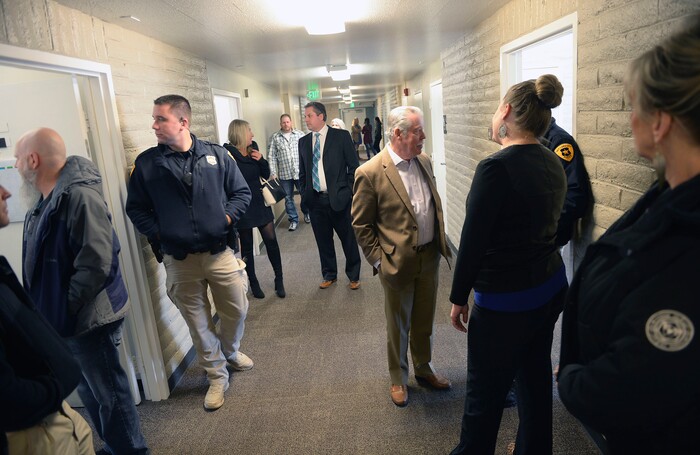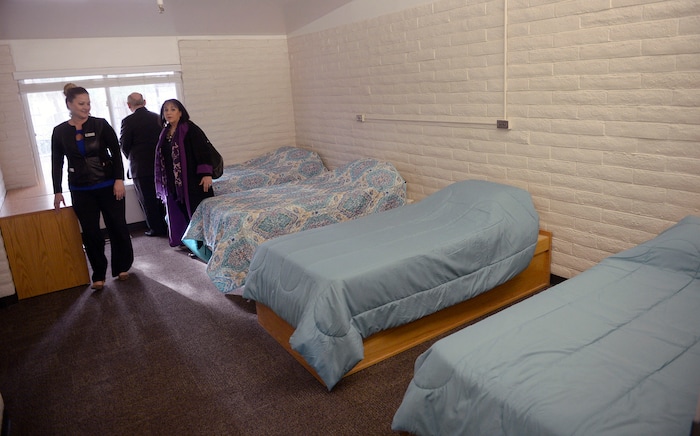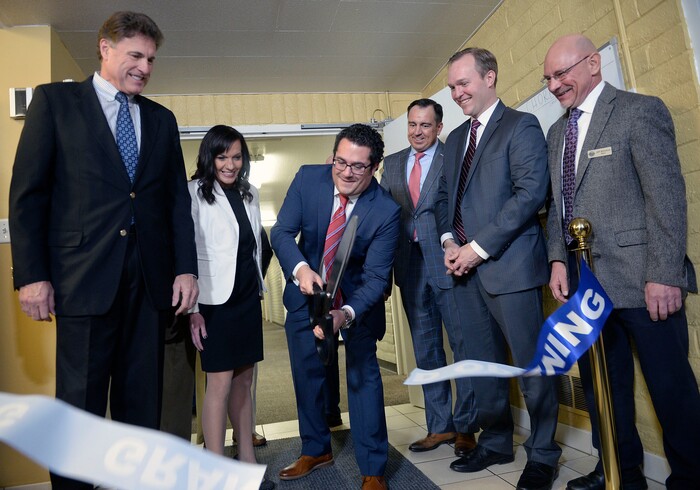Millcreek • On Thursday, about five months after Operation Rio Grande began, Utah leaders reached roughly the halfway point of their goal to provide more residential drug-treatment beds as they crack down on crime among the homeless.
The latest headway made on the big promise came as Odyssey House, a substance-abuse program, unveiled its largest expansion yet: 83 beds in a new facility in Millcreek that about doubles its current capacity. The two-year statewide collaboration aims for up to 240 beds.
“We have all come to the conclusion very quickly that the answer to all of our challenges is to open wider the doors to treatment,” said Salt Lake County Mayor Ben McAdams.
Behavioral-health treatment is considered “Phase Two” of the $67 million operation that looks to reduce lawlessness, violence and drug dealing near the downtown Salt Lake City shelter. The first 37 beds came online within weeks of the initial sweep as arrests outpaced the demand for jail space.
Odyssey House now has 240 beds spread over a handful of Utah facilities — and the program is admitting up to 10 people a day, said chief operating officer Christina Zidow. The opioid crisis, she said, is driving most of the demand (accounting for 50 percent of the program’s clients).
The ribbon-cutting Thursday for the center’s new expansion would not have been possible just two months ago when drug-treatment funding through Medicaid was limited to facilities with fewer than 16 beds. But with a waiver from the federal government that lifts the cap, Utah providers can now drastically boost their numbers of beds without losing that financing.
Inside the new U-shaped dormitory, nestled in a quiet Millcreek neighborhood, twin-size beds filled the rooms nearly ready for move-in day next week. The 30-year-old building was originally used as a mental-health facility and required little renovation to meet the treatment center’s needs (including a garden and meditation area).
Rachel Santizo completed the yearlong program at Odyssey House in 2013. At 24, she was diagnosed with fibromyalgia, which causes muscle pain and fatigue, and started taking Percocet and Lortab to help. Then, a friend introduced her to heroin. And she injected seven to 10 times a day.
Santizo said she quickly slid into homelessness from there and lost custody of her two kids.
“My self-value was measured by dumpster diving and being pistol-whipped by my abusive boyfriend,” she said. “Odyssey House allowed a safe place for me to walk through and face my fears and my reasons why I chose to do drugs.”
She now works as the recovery outreach specialist for the nonprofit, marketing the program to individuals going through an addiction like she did. Since receiving therapy, Santizo has regained custody of her son, now 18, and daughter, 15, and is six years sober.
House Speaker Greg Hughes, who attended Odyssey’s new opening, also welcomed two national experts on homelessness — Mary Hauser and David Smith — to the Utah Capitol on Thursday.
Smith founded a free clinic in San Francisco’s Haight-Ashbury neighborhood in 1967. The concept of treating drug addicts like patients, he said, was unheard of at the time. Drug use was a crime, and treating people for conditions associated with substance abuse was a risk for physicians.
The medical community has since grown to accept and embrace substance-abuse treatment as a way to help a high-needs population. Smith said that every $1 spent on treatment and other help for people with addiction and those who are homeless can save $7 in health and other social services spending.
“Failure to treat this population, that has multiple problems, overdoses in the emergency room, medical, hepatitis, infections,” he said, “is very expensive.”
Smith and Hauser focused on issues that are slated to dominate the upcoming legislative session, six weeks of policymaking that begins Jan. 22, including supportive housing and drug and mental-health treatment. Lawmakers will continue their push to make homeless-services reform a statewide priority, Hughes said.
Hauser, who has worked on similar issues in the Midwest and Northeast, said in her experience, smaller shelters are better than larger ones for helping homeless residents.
“There’s cost savings involved when you do this effectively,” she said.
The state has been working to improve services before the 1,100-bed downtown shelter, The Road Home, is slated to close and three new, smaller and more treatment-focused shelters open in July 2019.
